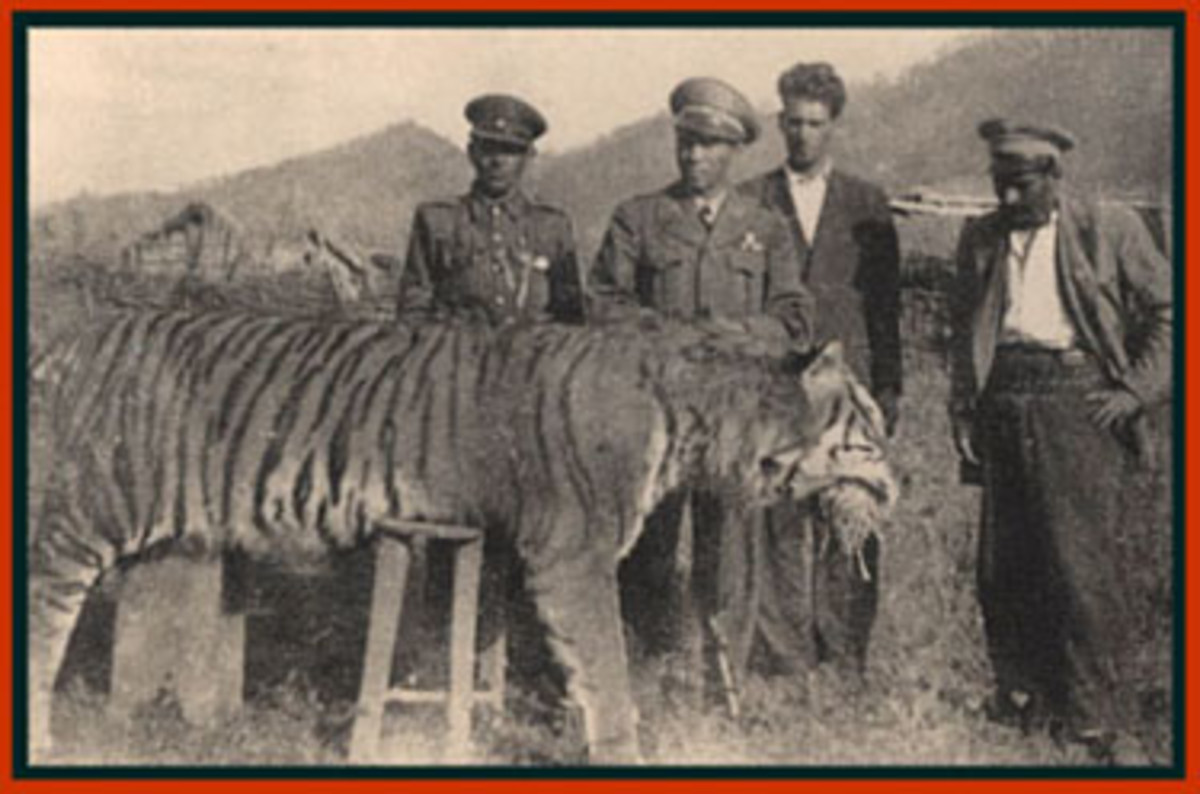- HubPages»
- Education and Science»
- Life Sciences»
- Endangered Species
Bite of the Bandy-Bandy: Chapter 1
YANKEE, GO HOME, AND OTHER NASTY SENTIMENTS
There's been a lot of talk lately about unwanted visitors. I'm not talking about in-laws or college students on an extended return from school. The visitors to which I refer have gone under a suite of pejorative titles: tramp species, non-native species, introduced species, and injurious wildlife. If you've been reading the herpetological magazines this past year, you are aware that Hawaii is now hip-deep in a campaign against such animals. There are few places that aren't concerned, to at least a small degree, about preserving the "natural" order of local Nature. Noble efforts, in some cases, but a bit confusing in concept and confused in practice.
We have all been exposed to the stories about the invasion of Guam by brown tree snakes (Boiga irregularis), voracious "tramps" that have decimated much of Guam's native bird populations. Considerable expertise and expense has been paid to eradicate the snakes, to limited effect. The biological fall of Guam became a rallying point for preservationist actions. How justified are such eradication stances?
Certainly we have witnessed unwise (and this a charitable choice of words) introductions around the world. Mongooses were brought to Caribbean islands that lacked venomous snakes in order to eliminate perceived venomous snakes. They decimated poultry and small native animals and contributed to increased diseases. Australians imported rabbits to provide some "familiar" European animals. Crop damage by rabbits is now almost legendary. As is the damage done by cane toads. Poor Australia; even when it didn't import the trouble-maker, it helped increase the threat's population size. Unaware that cut-up sea stars ("starfish" to some) will grow into new sea stars, Australian fishermen and (?) biologists captured crown-of-thorns sea stars, hacking them to bits, and tossing the still viable remains back onto the reef!
I thought California led the pack in released wildlife paranoia until the Hawaiian issue came along. Does anyone with herpetocultural experience believe that Jackson's chameleons are a threat to bird populations? Granted that an adult lizard might take a fledgling, how rare is this event? My gray cells hurt when trying to conceive of day geckos as "injurious." Sadly, almost nothing of "native" lowland Hawaii is still in place. Humans long ago annihilated the few true natives, replacing them with agricultural lands, ornamental plant (non-native) farms and tourist facilities. Certainly Hawaii should conserve its remaining native wildlife, but few native species dwell near cane fields and swimming pools.
The preservation of natural areas, if intelligently conceived and enacted, should be given highest priorities. What is so often overlooked is the reality of the number and degree of invasiveness of so many "foreign" species. Herpetoculturists may cringe when told Jackson's chameleons will devastate Hawaiian birds, or that alligators may proliferate and become a threat in San Francisco, but does anyone consider that the most destructive animals-barring the all too obvious humans-are domestic cats, rats, and assorted plants? Goats were a big problem, but they have been culled from islands ranging from Round Island to New Zealand. Round Island, a tiny mound in the Indian Ocean, has had its goats removed in a so-far successful effort to preserve the rare and endemic gecko, skink, and boa species. Too late, alas, for one of the boas, now considered extinct. Cats are pets, and few people really consider how much damage they do to small animals, native or not. There are many more critical battles to wage than those against questionably influential species.
In my "natural" California neighborhood, I am surrounded by eucalyptus trees (Australian imports, brought over by some genius who incorrectly thought they would provide a good source of lumber), and Mediterranean ice plants covering the fragile sand dunes. Ice plants have broad, fine roots that effectively take all the water in the soil, crowding out native plants and insects. Many streams are filled with the large tadpoles of non-native eastern bullfrogs (imported as a food commodity), which have steadily been eliminating the native frogs. English sparrows are common here. Mediterranean fruit flies periodically threaten (mostly non-native) crops. If I want to see a "native" coastal community, I have to go to a State Preserve, where I must stay on the designated path. Natives are now rare and often threatened.
We are told that humans are the main movers of animals and plants, to the detriment of native species. Geological facts dispute this assertion; how can humans compete with events such as the ramming of North and South America to allow hitherto unprecedented exchanges of species? Winds, rafts, and temporary bridges also contribute to the colonization of islands and continents. To use Hawaii as an example again, how else did the volcanic islands-never connected to or even located near a continental mass-obtain its flora and fauna? Long before human colonization, rafts, winds and sea birds brought seeds, insects, spiders, and a few lizards. Humanity has merely accelerated the rate of species transport. As a biological species, humans must be seen as a natural-albeit very rapid and effective-factor altering the global biogeography.
Maybe it is time to take a different view of "non-native" species. Looking at the paleontological record, few species alive today were "native" to their present distributions in times past. Biogeography is the study of distribution and dispersal of species. The dispersal we see today is "natural," unless we can truly see humans as separate from everything else on Earth. Maybe the preservation of diversity should be more focused on defensive actions in largely uninvaded habitats rather than offensive actions against new colonizers.







